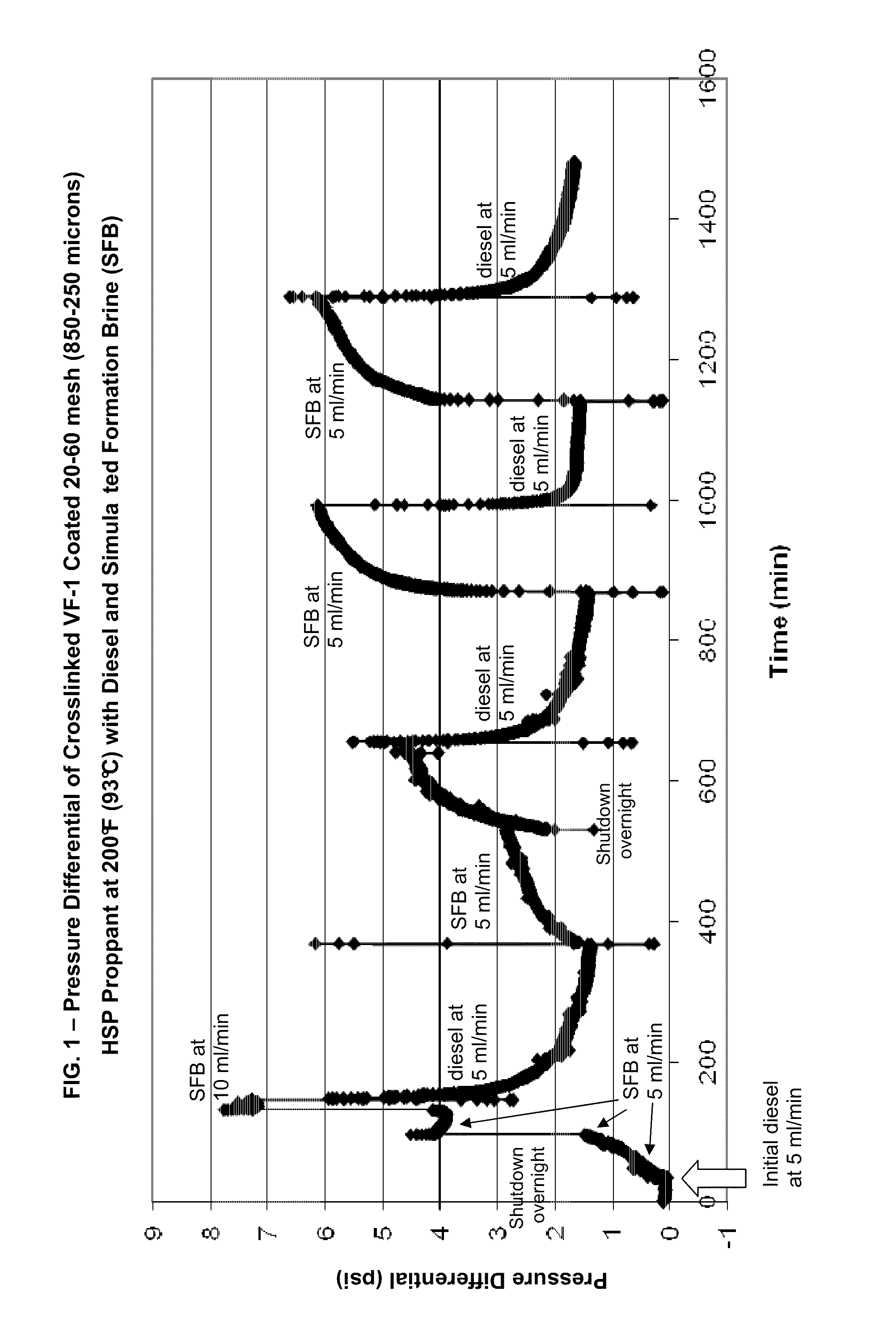Method of Controlling Water Production Through Treating Proppants With RPMS
a technology of proppants and rpms, which is applied in the direction of well accessories, drilling compositions, chemistry apparatus and processes, etc., can solve the problems of unwanted water production, difficult uniform distribution of rpms, and inability to prevent the corrosion of tubular parts, etc., to achieve the effect of inhibiting water flow
- Summary
- Abstract
- Description
- Claims
- Application Information
AI Technical Summary
Benefits of technology
Problems solved by technology
Method used
Image
Examples
examples
[0024]FIG. 1 is a graph of the pressure differential of crosslinked VF-1 copolymer coated on 20-60 mesh (850-250 micron) HSP® proppant at 200° F. (93° C.) with diesel and simulated formation brine (SFB). HSP proppant is available from Carbo Ceramics. VF-1 is a cross-linked vinylamide-vinylsulfonate copolymer. The HSP proppants were coated with the VF-1 polymer as described above. The polymer loading is 0.4% bw (by weight) of the proppant weight. FIG. 1 is a response test graph showing that the pressure differential of the polymer-coated proppant placed inside of a 12-inch long, 1-inch ID stainless steel tube (about 30 cm long by about 2.5 cm ID) changes when pumping with oil (diesel in this Example) relative to pumping with formation water (Simulated Formation Brine or SFB) flowing through the pack. This graph demonstrates that the pack exhibits high flow resistance for water and low flow resistance for oil.
[0025]FIG. 2 compares the pressure differentials between the base proppant (...
PUM
| Property | Measurement | Unit |
|---|---|---|
| size | aaaaa | aaaaa |
| temperature | aaaaa | aaaaa |
| relative permeability | aaaaa | aaaaa |
Abstract
Description
Claims
Application Information
 Login to View More
Login to View More - R&D
- Intellectual Property
- Life Sciences
- Materials
- Tech Scout
- Unparalleled Data Quality
- Higher Quality Content
- 60% Fewer Hallucinations
Browse by: Latest US Patents, China's latest patents, Technical Efficacy Thesaurus, Application Domain, Technology Topic, Popular Technical Reports.
© 2025 PatSnap. All rights reserved.Legal|Privacy policy|Modern Slavery Act Transparency Statement|Sitemap|About US| Contact US: help@patsnap.com


